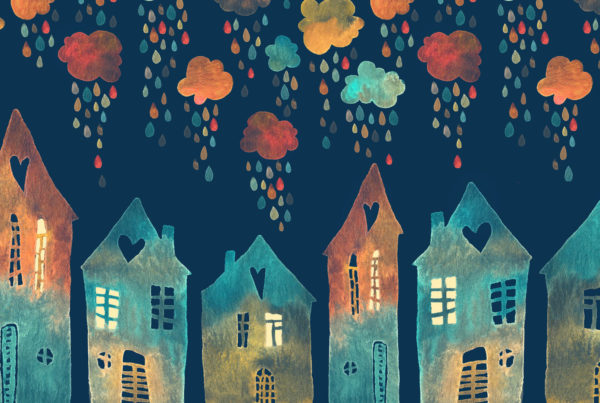As a society we tend to be intrigued, even obsessed, with the self-destructing behaviors of celebrities – from Britney Spears shaving her head in a public meltdown, to Kayne West going on political rants in public interviews, to “America’s Sweetheart” Martha Stewart spending time in prison for fraud. The media is notorious for bringing celebrities and their issues into the limelight, and as a society we cannot get enough of it. (Think about it: how many “reality stars” can you name off the top of your head right now?)
Because of this pop culture phenomenon, we as a society have a responsibility to promote awareness and prevention, as we work to decrease the amount of people we lose each day to suicide. The deaths of famed designer Kate Spade and celebrity chef and TV host Anthony Bourdain were not simply pop culture tragedies; they were the latest indicators of an intractable public health crisis that has been unraveling in slow motion for the past generation.
We are all statistically more likely to kill ourselves than we were ten years ago. That in itself is a depressing fact. By sheer increase of prevalence rates, each one of us have an increased risk of being impacted by a suicide. Our increased vulnerability and the impact of social media coverage of suicide interacts with our own unprotected selves. And those who are diagnosed with clinical depression or young people struggling with mental health issues may feel a push toward suicide increase by this kind of news. If life was not worth living for people like Kate Spade and Anthony Bourdain, how can our more ordinary lives hold up? This goes to show that there is nothing about financial and social success that protects you from depression or suicide.
Suicide is a public health emergency across the globe, anda tragedy that cuts across all demographic lines in the United States:
- In 2013, suicide was the 10th leading cause of death overall and the second leading cause of death among young people ages 15 to 34 years, according to the Centers for Disease Control and Prevention.
- Perhaps more surprising to many, the suicide rate is consistently higher than the homicide rate in the United States.
- In the United States, approximately 45,000 Americans die by suicide annually. This is an average of approximately 123 suicides each day; and for every suicide in America, twenty-five additional people will have a suicide attempt. To put these numbers into perspective, think about the last flight you took. A Boeing 737 airplane holds anywhere from 130-140 people. Imagine if one commercial airliner flying across country, crashed every day. After one crash, the media would report the devastating news. After the second crash, the third crash, the fourth… how long would it take for agencies to step in and say “There seems to be an issue with these airplanes…”?
The way in which the media reports and educates our young people on this issue will determine whether this crisis will be addressed effectively, or the rates of suicide will continue to increase in our society.(1)
The rapid growth of social media and its substantial use by the younger population presents new challenges in dealing with this public health crisis. However, it may also provide opportunities for more effective suicide prevention options.
Fostering awareness – and preventing tragedy
In 1962, after Marilyn Monroe died, suicide rates jumped by approximately twelve percent. In 1994, when rock star Kurt Cobain of Nirvana died by suicide in Seattle, there was concern about the possibility of “copycat suicide attempts.” Because of this fear, suicide reporting guidelines were adopted, where news articles pertaining to suicide were also accompanied by suicide prevention hotline numbers, as well as other prevention resources. This change led to a noted increase in calls made to suicide hotlines and crisis resources; for example, following the tragic passing of comedian Robin Williams in 2014, the National Suicide Lifeline reported a doubling of the number of calls it received.
After a groundbreaking performance by the hit rapper Logic at this year’s Video Music Awards of his song “1-800-273-8255”, the National Suicide Lifeline reported a 50% increase in their number of calls. The rapper performed this hit song related to suicide prevention, offering viewers who may have similar thoughts of darkness hope to live. On stage with him were suicide attempt survivors, wearing T-shirts with the number for the National Suicide Lifeline. What is particularly significant with this increase in volume is that the song is not focused on the tragedy itself. The media coverage is focusing on starting conversations about suicide prevention, about finding hope, about getting help, as opposed to suicide.
In recent pop culture, there has been controversy surrounding the release of the Netflix series, 13 Reasons Why, which depicts the suicide of a high school student. Many people have praised the series for opening the door for communication about teen suicide and for raising awareness about suicide and prevention interventions. However, many have also condemned the series for its “over-glamorization of self-destruction;” for some viewers, including parents, therapists, educators and counselors alike, the series romanticizes the victim and her death in a way that could promote suicide. As a community, we identify both pros and cons to addressing these mental health concerns and the stigma related to suicide.
In a larger sociological context, suicide contagion or “copycat suicides” can increase with improper media coverage. Certain types of news coverage or responsiveness to suicide may increase the likelihood of suicide in populations that are already at risk. An already vulnerable population may have an increased risk based on the magnitude, the duration, and the prominence of the coverage. The risk of a suicide contagion increases when the story explicitly recounts details of the suicide. This could include describing the method used, frequent coverage that sensationalizes the death, or the use of dramatic headlines or images. When we open the lines of communication and social networking are reporting on suicide cautiously and with empathy, we can change public misperceptions surrounding suicide and can persuade young people and those who are vulnerable to seek intervention strategies.(2)
We see the ripple effect after someone dies by suicide, whether that person is a multimillion dollar celebrity, a beloved comedian, a physically fit athlete or the neighbor down the street. Suicide does not discriminate in regards to race, gender, socioeconomic status, or if you have a reality show. Some of these ripples can be seen as positive; resources are shared and public conversations are started. People may be quicker to tell their family “I love you” or hug someone a little tighter.
But what can therapists and/or mental health professionals do at a time of loss? There are several tips that health care professionals can utilize when communicating with a suicide loss survivor. If you or someone you know is considering suicide or suffering with depression as a suicide loss survivor, researchers agree that the best thing to do is talk:
- Be genuine, authentic, and compassionate
- Assist with normalizing the feelings that loss survivors are having: guilt, shame, remorse
- Attend to the unique nature of suicide bereavement and understand that we don’t always know what helps the most after a suicide
- Assist people to understand that what helps most after a suicide is different for everyone
- Understand and be empathetic to the perception of their relationship with the deceased
- Help people understand that there is room for hope after the suicide
- Be knowledgeable about other resources and social supports for the survivor(3)
Regardless if we are talking about the impact of a Netflix series or the death of a Hollywood personality, young people are being immersed with tragedy through social networks, and these tragedies are having a significant impact on an already exposed population. Each of us can take a stand toward this effort to decrease the number of people who are lost from suicide each day. If you or someone you know is considering suicide, please contact the National Suicide Prevention Lifeline at 1-800-273-TALK (8255), or text “help” to the Crisis Text Line at 741-741. You can also utilize online resources, such as suicidepreventionlifeline.org.
There are no perfect solutions to this overwhelming global crisis, no vaccine to protect against suicide. But we have a social responsibility to implement preventative public health initiatives to continue the national conversation – because talking saves lives.
References
- American Foundation for Suicide Prevention (AFSP). (n.d.) Suicide Statistics. New York, NY: AFSP. Retrieved from AFSP.org.
- American Foundation for Suicide Prevention (AFSP). (2016). Recommendations for reporting on suicide. Retrieved from AFSP.org.
- Sanford, R., et al. (2016). Suicide loss survivors’ experiences with therapy: Implications for clinical practice. Community Mental Health Journal, 52(5): 551-558. Retrieved from Springer.com






